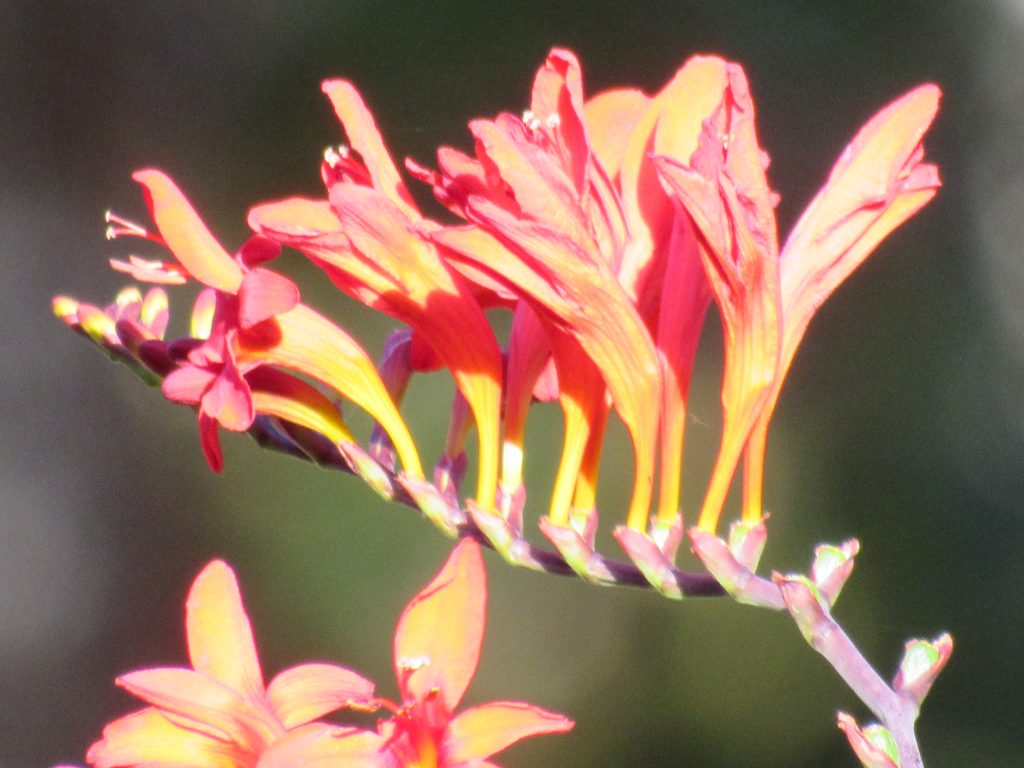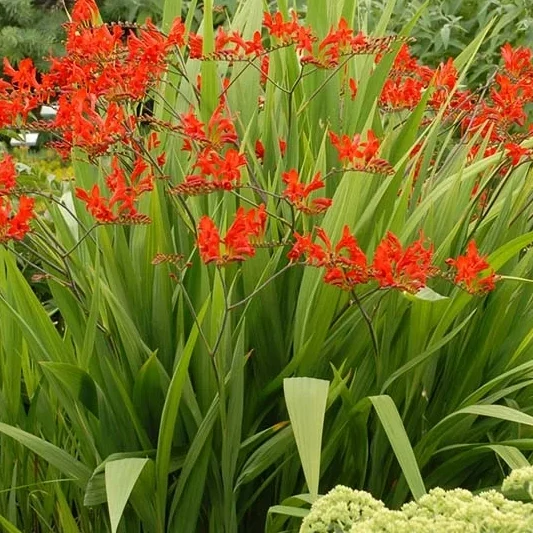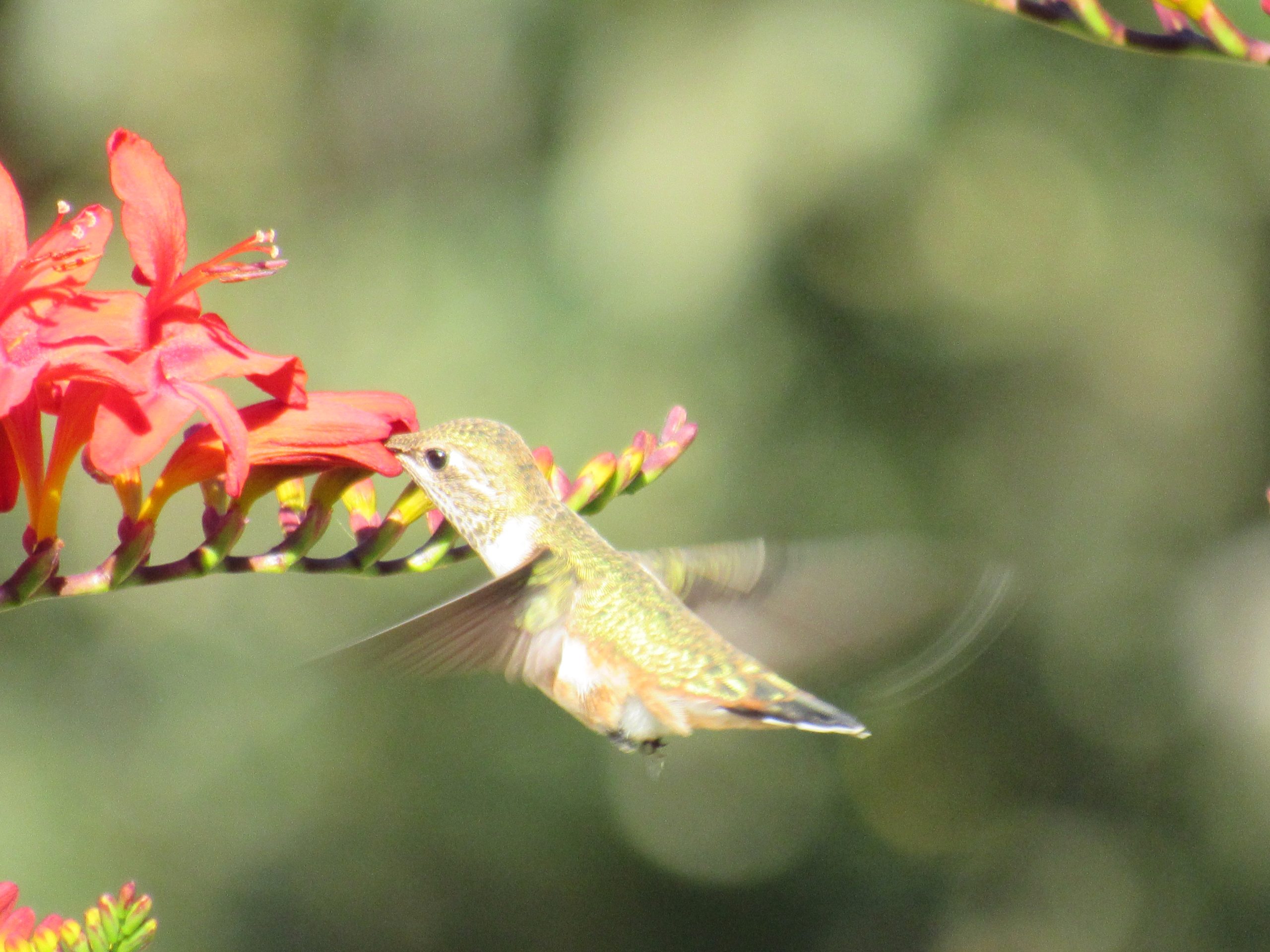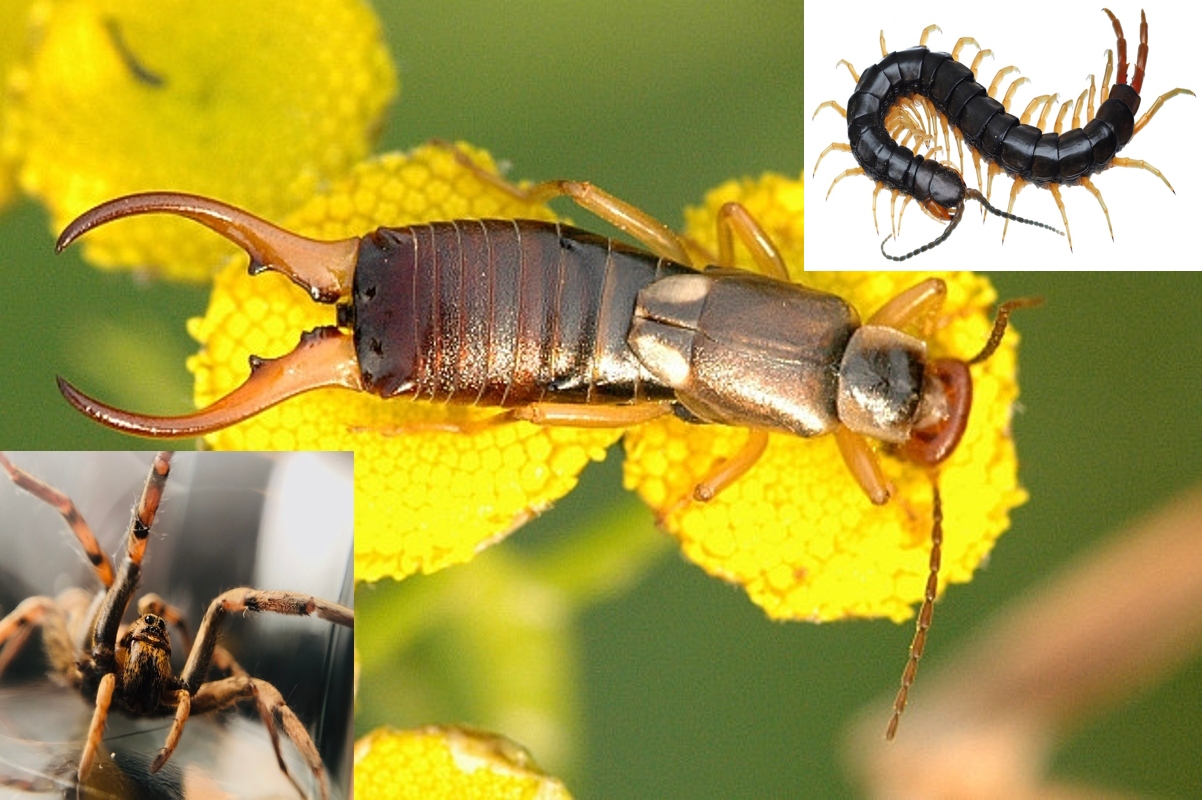Cocosmia Lucifer, with its vibrant red flowers and easy-going nature, is a fantastic addition to any garden. Whether you’re an experienced gardener or a complete novice, cultivating these stunning plants can be a rewarding experience. They not only provide a stunning burst of red color to your landscape or garden but they also attract hummingbirds by the dozen. It’s a bulb based plant and perennial in nature. They also are very easy to propagate just by separating bulbs from the main plant at the end of the year. This plant is deer resistant but they will eat the flowers if you give them easy access.
Why Cocosmia Lucifer?
- A Burst of Color: The most obvious benefit is the striking red hue of Cocosmia Lucifer flowers. They add a pop of color to your garden, creating a visually appealing and vibrant atmosphere.
- Low Maintenance: For those who don’t have a green thumb, Cocosmia Lucifer is a great choice. These plants are relatively low-maintenance and can thrive in various conditions.
- Attracts Pollinators: The bright flowers of Cocosmia Lucifer attract pollinators like bees and butterflies, contributing to a healthier garden ecosystem.
- Versatility in Planting: Cocosmia Lucifer can be planted in various locations, from garden beds to containers. This versatility allows you to incorporate them into your garden regardless of space limitations.

How to Grow Cocosmia Lucifer:
1. Choosing the Right Location:
- Cocosmia Lucifer thrives in full sun to partial shade. Select a location in your garden or landscape that receives at least 6 hours of sunlight per day.
- Ensure well-draining soil to prevent waterlogging.
2. Planting:
- Plant Cocosmia Lucifer bulbs or corms in the spring, after the last frost has passed.
- Dig a hole twice the depth of the bulb and place it with the pointed side facing up.
- Space multiple bulbs at least 6 inches apart.
3. Watering:
- Keep the soil consistently moist but not waterlogged during the growing season.
- Reduce watering in late summer as the plant enters dormancy.
4. Fertilizing:
- Apply a balanced, all-purpose fertilizer in spring to encourage healthy growth.
- Avoid over-fertilizing, as this can lead to excessive foliage growth at the expense of flowers.
5. Maintenance:
- Remove spent flowers to encourage continuous blooming.
- Mulch around the plants to conserve moisture and suppress weeds.
6. Winter Care:
- In colder climates, consider mulching over the bulbs in late fall to protect them from freezing temperatures.

The sooner you get the bulbs in the sooner you will be able to enjoy all of the benefits of these wonderful plant. City dwellers with balconies that get sun can even grow them in pots. Get started today!





